

Internet of Things IoT Hardware. WTF is the Internet of Things and how insurers will use it against you. Sysadmin Blog What is "the internet of things" and why should we care?
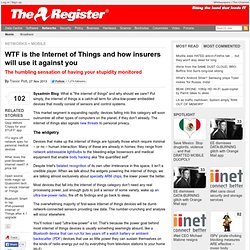
Put simply, the internet of things is a catch-all term for ultra-low-power embedded devices that mostly consist of sensors and control systems. This market segment is expanding rapidly; devices falling into this category will soon outnumber all other types of computers on the planet, if they don't already. The internet of things also signals new threats to personal privacy. The widgetry Devices that make up the internet of things are typically those which require minimal – or no – human interaction. Despite Intel's belated recognition of its own utter irrelevance in this space, it isn't a credible player. Most devices that fall into the internet of things category don't need any real processing power, just enough guts to poll a sensor of some variety, wake up an ultra-low-power radio, fire off its findings and go back to sleep. You'll notice I said "ultra-low-power" a lot. Freescale: We'll drive Internet of Things off a cliff ... and into the cloud.
Wearable devices are great examples of accessible stuff within the Internet of Things, but on the whole they’re pretty dumb sensors.
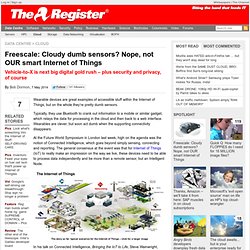
Typically, they use Bluetooth to crank out information to a mobile or similar gadget, which relays the data for processing in the cloud and then back to a web interface. Wearables are clever, but soon act dumb when the supporting connectivity disappears. At the Future World Symposium in London last week, high on the agenda was the notion of Connected Intelligence, which goes beyond simply sensing, connecting and reporting.
The general consensus at the event was that for Internet of Things (IoT) to really make an impression on the way we live, these devices need to be able to process data independently and be more than a remote sensor, but an Intelligent Node. Gogonetlive.gogo6.com/pdf/4/gnl_18.pdf. Node red raspberry image.
Raspberry pi dev kit. Objets Connectés. Ciseco. Internet on Things. Why FlyportPRO SoM?
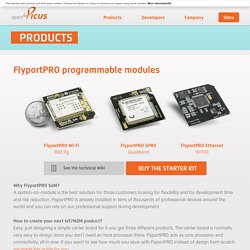
A system-on-module is the best solution for those customers looking for flexibility and for development time and risk reduction. FlyportPRO is already installed in tens of thousands of professional devices around the world and you can rely on our professional support during development. How to create your next IoT/M2M product? Easy, just designing a simple carrier board for it you get three different products. The carrier board is normally very easy to design since you don’t need an host processor there: FlyportPRO acts as core processor and connectivity, all in one. Embedded development made easy We provide you a powerful IDE, for free. Connectivity features Web server, HTTP server (only on Wi-Fi/GPRS versions) HTTP Client FTP Client SMTP, SNTP FOTA firmware upgrade over the air (only on Wi-Fi/GPRS versions) SSL/TLS security FlyportPRO pinout 60 pins are available for your application. Internet of Things IoT Hardware.
Internet of Things Technologies. The "Internet of Things" covers a huge scope of industries and applications.
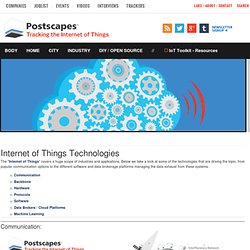
Below we take a look at some of the technologies that are driving the topic, from popular communication options to the different software and data brokerage platforms managing the data exhaust from these systems. Communication: Image Credits: RFID (CC xampl9), Enocean (CC foto@jens-braune.de), NFC (CC sam_churchill), Bluetooth (CC bfishadow), GSM (CC NightRStar) Wireless. IoT Primer: Short-Range Wireless: Comparison of the Key Technologies. In the process of my research around DASH7 and WirelessHART technologies I had to do a lot of comparison against ZigBee, Z-Wave, 6LoWPAN and other wireless technologies.
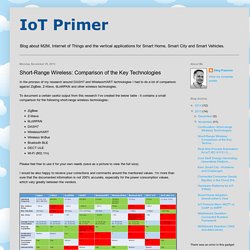
To document a certain useful output from this research I've created the below table - it contains a small comparison for the following short-range wireless technologies: ZigBeeZ-Wave6LoWPANDASH7WirelessHARTWireless M-BusBluetooth BLEDECT ULEWi-Fi (802.11n) Please feel free to use it for your own needs (save as a picture to view the full size). I would be also happy to receive your corrections and comments around the mentioned values. I'm more than sure that the documented information is not 200% accurate, especially for the power consumption values, which vary greatly between the vendors. Single Board Computers. Contiki: The Open Source Operating System for the Internet of Things.
The ThingBox Project. Is it for me?

I'm not an electronic engineer... For non technical people, this site provides a one-step easy install of a graphical interface that allows to deal with the Internet of Things. You already own the most important connected object: your smartphone. The first examples uses only it so you don't need anything else.
MQTT.